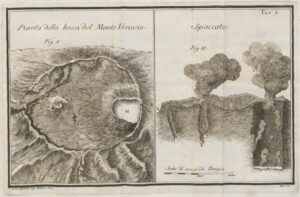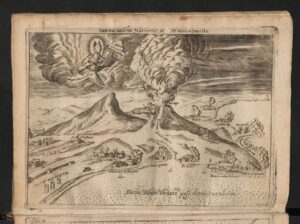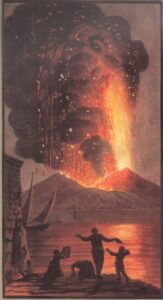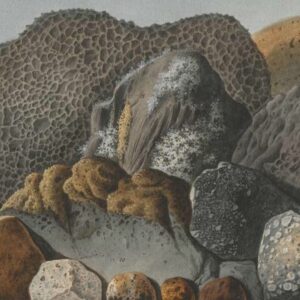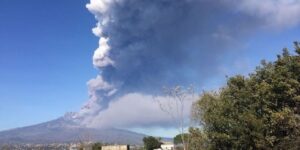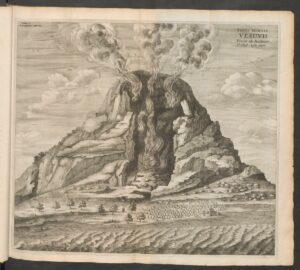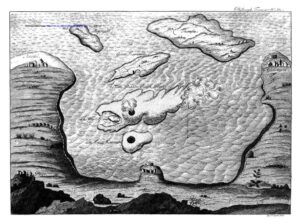THE SITE explores from the perspective of the history of science and of the history of art the iconography of volcanoes from the 17th to the 19th century. It aims to provide an account of the scientific theories and practice related to the images of volcanoes, as well as their historical significance in the birth of geology.
SOME of these images which date back to a time when the science of modern geology was slowly emerging, have been used by contemporary volcanologists as technical data to reconstruct the history of volcanoes.
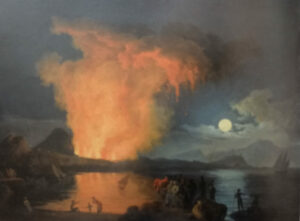
OTHERS have been studied by art historians for their aesthetic values.
BUT A SYSTEMATIC investigation of their role in the history of Earth Sciences and in the history of art is still in demand. This database aims to fill in that gap. Conventional chronological categories (year of eruption) will be combined with themes (theories, orographic changes, etc ) and authors (scientists, artists, engravers, publishers) and information aimed at reconstructing the significance of these visual documents for the history of science and the history of art.
WHILE this first issue is focused primarily on the iconography of Vesuvius, the site also contains articles on Etna, Santorini and a few other locations. It is our purpose to include in the near future images from a great variety of volcanic sites that are relevant for the history of modern science.
WHILE this first issue is focused primarily on the iconography of Vesuvius, the site also contains articles on Etna, Santorini and a few other locations, but in the future the idea will be to include images from a great variety of volcanic sites that are important for the history of science and art.
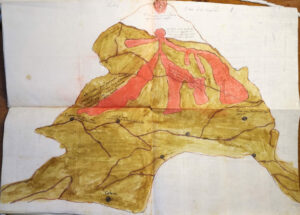
Etna 1634-1635
THE SITE is basically composed of ARTICLES/ENTRIES each dealing with a single image or group of images. Every article contains an introduction devoted to the origin and history of the image and an analytical text focused on the phenomena (for example, lava flows and products from a given eruption) and on the theories and interpretations the image may represent (for example: interpretation of the volcano as a local or global phenomenon). In both, the discourse expands, also thanks to links to various articles, from the single image to the author’s entire output and to other authors and images.
ARTICLES are accessible through the AUTHORS mode which collects the names of scientists, artists and publishers; the PHENOMENA AND THEORIES mode; and PLACES AND ERUPTIONS mode.
The DIGITAL LIBRARY includes, when available, links to online versions of the treatises from which many of the images have been taken. The sections BIOGRAPHIES, BIBLIOGRAPHY and TIMELINE provide additional scholarly support.
HISTORICAL NARRATIVE
The Mission page will soon include access to a HISTORICAL RECONSTRUCTION which in this first issue will be focused on representations of Vesuvius between the seventeenth and nineteenth centuries. The text in a continuous discourse will discuss the connections that have been raised in the individual articles and to which it is connected by links.
